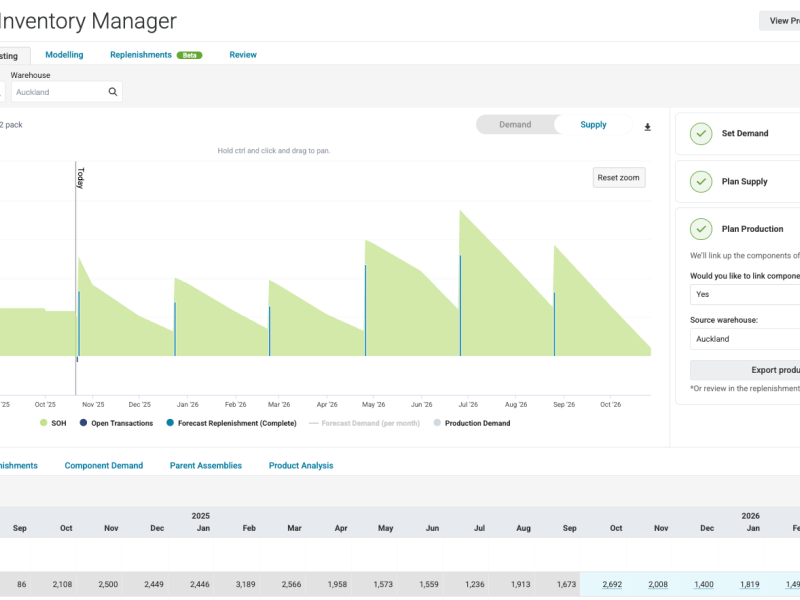Frank Baldrighi, business development manager – Australia and New Zealand, GETAC
Industrial maintenance services play a pivotal role in shaping profitability and overall equipment effectiveness (OEE) for the manufacturing industry. OEE can be significantly impacted by machine downtime, which can be costly, making maintenance a critical component of success in manufacturing.
Achieving and maintaining a competitive edge in this sector often hinges on whether machinery functions seamlessly and unplanned downtime is minimised. This sweet spot is where manufacturing organisations can integrate rugged technology for enhanced industrial maintenance as a transformative strategy.
Rugged technology solutions are known for their robustness in challenging environments, which makes them an ideal companion for maintenance in manufacturing. The use of rugged technology, such as fit-for-purpose tablets and mobile devices, lets manufacturers streamline their maintenance schedules, optimising the balance between preventative and corrective maintenance. Because rugged tablets are less prone to wear-and-tear across challenging environments than generic devices, they are the ideal choice for manufacturing operations.
The harsh conditions of industrial environments pose various challenges, ranging from extreme temperatures to exposure to dust and vibrations. Rugged devices help to ensure the safety of maintenance staff while maintaining the integrity and accuracy of data collection. Rugged devices pave the way for predictive maintenance through real-time data collection and analysis capabilities, facilitating timely interventions before equipment failures escalate into costly work interruptions.
In the broader scope of digital transformation in manufacturing, rugged technology is also a key player in facilitating the integration of advanced technologies like the Internet of Things (IoT) and artificial intelligence (AI). IoT sensors can provide a constant stream of data on equipment performance and environmental conditions when coupled with rugged devices. This data can be processed through AI algorithms to predict maintenance needs more precisely, further refining maintenance schedules and reducing unnecessary interventions.
This dual benefit is indispensable in making informed and timely decisions regarding equipment maintenance. The real-world applications of rugged technology in industrial maintenance are compelling and illustrate the profound impact this technology can have on operational efficiency and reliability. For example, rugged devices can accelerate an assembly line by giving users access to real-time data on machinery performance to conduct diagnostics and promptly address any issues that arise, ensuring any potential equipment malfunctions can be identified before they lead to production stoppages. Companies have also used rugged devices to enhance the accuracy and performance of their maintenance systems, increasing their equipment’s reliability and longevity.
Despite its clear advantages, using rugged technology in industrial maintenance introduces its own set of challenges, including initial investment concerns, the need for training personnel in new technology, and ensuring seamless integration with existing maintenance systems. However, the long-term benefits and cost savings achieved through enhanced productivity and improved safety significantly outweigh these initial challenges.
Rugged technology offers a strategic solution for manufacturers seeking to bolster their industrial maintenance productivity. It is a proactive approach that enhances the efficiency and reliability of maintenance operations while aligning with the overarching goal of ensuring uninterrupted production and maximising profitability.
The adoption of rugged technology in industrial maintenance also heralds a shift towards more sustainable manufacturing practices. This aspect, while not immediately obvious, is integral to the broader narrative of industrial efficiency and environmental responsibility. By optimising maintenance processes and extending equipment life, rugged technology contributes to reducing waste and material usage indirectly. This is particularly relevant in today's context, where sustainable practices are not just a corporate responsibility but also a competitive differentiator.
Furthermore, rugged technology better equips maintenance teams to perform complex diagnostics and repairs on site. This reduces the need to transport equipment back and forth to maintenance facilities, thereby cutting down on logistical expenses and associated carbon emissions. The ability to conduct detailed inspections and repairs in the field is not just a matter of convenience; it's a step towards leaner, more environmentally conscious operations.






